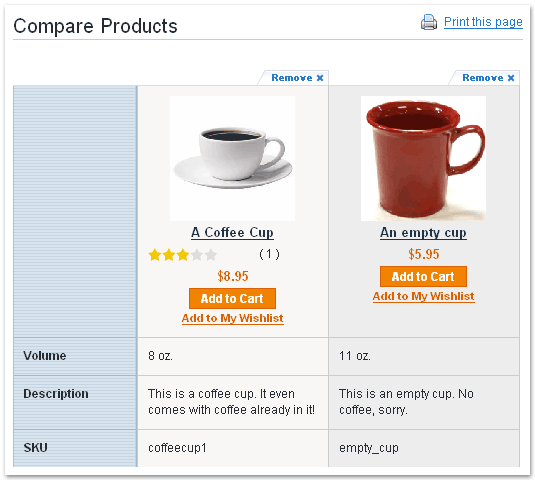Perhaps unsurprisingly, psychology has emerged as one of the most useful tools used by marketers. It gives us a glimpse into workings of the human mind, along with some useful techniques for subtly influencing it. Below are 11 useful tips that you can use to improve your customer engagement and your conversion rate.
1. Engage the Senses
Buying anything online can be a tricky proposition; people don’t necessarily have a chance to really see or touch the product before they commit to buying it. As a result, you’ll want to help your customers feel as though they know the product intimately. This can include high-quality product shots or testimonials from other customers. In other words: make them feel as though they already own it.
2. Use Emotion to Your Advantage
Humans are emotional creatures, and our range of feelings can be easily played to. The most effective marketing techniques have nothing to do with spewing product specs or shouting about how low prices are; instead, they’ve become about telling a story, about making the audience feel a deep and personal connection with the brands they interact with.
3. Assuage Suspicions
Most of us are naturally suspicious; after all, the Internet is full of people who are only too willing to take advantage of overly trusting people. To that end, guiding customers along toward conversion involves no small amount of reassurance. Try to anticipate potential doubts or suspicions, and then do your best to reassure your customers. There are many ways to do this, such as backing up your claims with authoritative sources and providing reviews from existing customers.
4. Offer Exclusivity

There’s no getting around the fact that online retailers and “big box” brick-and-mortar stores can be both cheaper and more convenient than buying direct. The solution to that problem lies in exclusivity; offer something that they can’t get anywhere else, and you’ll tap into customers’ love of owning something uncommon.
5. Provide Flexibility
If there’s one thing online shoppers hate, it’s a lack of flexibility. This can include everything from the checkout process itself to shipping and payment options. Don’t force customers to register; allow them to check out as a guest if they wish. In addition, offer a variety of payment options to make sure that nobody is left out.
6. Offer Fewer Choices
This one might seem just a little bit strange, but it definitely plays to a well-established phenomenon in psychology. People tend to get overwhelmed when presented with more than one or two choices, which is why it makes sense to simplify your product offerings. By offering just a few very clear-cut choices to customers, you’re helping to ensure that they don’t lose their momentum in the face of an array of potentially confusing options.
7. Draw Comparisons

Customers want to know that you stand behind your product. One way to demonstrate that confidence is to compare your offerings to those of your competitors. Show them in black and white why your products stand out from the crowd.
8. Take Advantage of Crowd Mentality
The reason why social media marketing is so effective is because people love “belonging” – that is, they love being a part of emerging trends. If you can, find a way to tie social media into your product offerings; reveal just how many people have clicked that “Buy” button, or how many people in their networks have subscribed.
9. Explain the Benefits to Your Customers
Whether online or offline, impulse buying is an important thing to capitalize on, and tends to be fairly effective in the eCommerce world. That said, more expensive or involved purchases need to play the game of reciprocity. If you’re expecting your customers to commit to making a big decision, whether it’s parting with their money or simply giving up their personal information, they need to have a very clear idea about what’s in it for them. Don’t by shy about explaining, clearly and concisely, in a way that will provide a feeling of self worth, precisely what they’ll be getting out of the arrangement.
10. Don’t “Sell” – “Impress” Instead
People staple their wallets shut and it takes a crowbar to get them open. The crowbar is, in this sense, direct advertising and propaganda. Show people the same ad enough times (20+) and they might finally cave in, at least once. However, there are other less intrusive and arguably more commendable paths to get wallets open without even showing them a product. This is content marketing psychology working at its finest. For example:

This infographic showcases, as you would guess, the world’s fastest roads. It’s filled with beautiful visuals and insightful statistics. This is content marketing. But, at a more subtle level, there is a psychological process going on. We are engaging the brand by sharing the infographic on social media with our friends and peers which is a type of referral. We comment about it which is a type of rating. By creating referrals and ratings in a setting free of “get your wallets out folks!” we soften the staple and remove the need for crowbar marketing.
11. Stop Forcing the Issue
It’s only too easy to start thinking that you have control over somebody’s behavior. The truth is that all we can do is attempt to influence, guide, and inform; when it comes to clicking the “Buy” or “Subscribe” button, only the customer can make that decision. Anything that attempts to push them more forcibly is only going to come across as off-putting or desperate. What you have to do is state your case clearly; what they do with that information is ultimately up to them.
This article is an original contribution by Jesse Aaron.
Find out how you can become a part of Business 2 Community.
Related White Papers
GigaOm Research: A New Charter for HR
Social Selling: An Overview for Sales Executives
Open all references in tabs: [1 - 6]